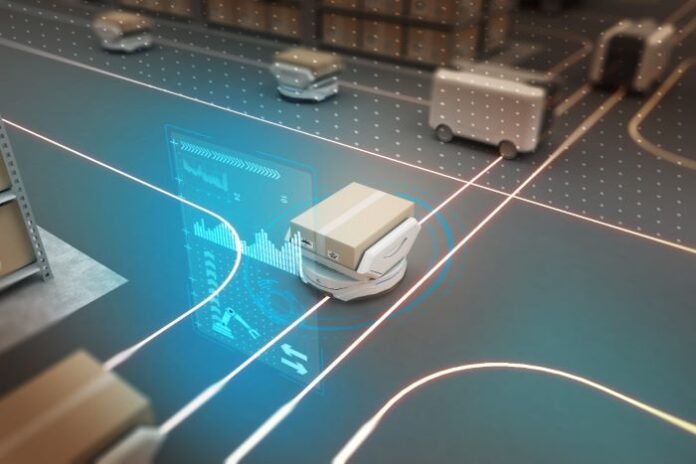In recent years, technology has revolutionized virtually every sector, and the moving industry is no exception. From enhancing customer experiences to streamlining operations, technology has become an integral part of how moving companies operate.
The traditional methods of planning and executing a move have evolved, paving the way for smarter, more efficient, and customer-centric approaches.
This blog explores the transformative role of technology in the moving industry and how it is reshaping the way businesses and consumers approach relocation.
Table of contents
1. Improved Customer Experience
One of the most significant impacts of technology in the moving industry is the enhancement of customer experience. In the past, customers often faced numerous challenges, such as difficulty in obtaining accurate quotes, coordinating with moving companies, and keeping track of their belongings during a move. Technology has addressed these pain points in several ways:
Online Booking Platforms
Gone are the days when customers had to visit a moving company’s office or spend hours on phone calls to schedule a move. Online booking platforms allow customers to book services with just a few clicks. These platforms are user-friendly and provide all necessary information, from pricing and availability to detailed service options.
Instant Quotes
Advanced algorithms and AI-powered tools enable moving companies to offer instant and accurate quotes. Customers can enter their details, such as the size of their home, the distance of the move, and additional services required, and receive a precise estimate in minutes. This transparency builds trust and simplifies the decision-making process.
Real-Time Tracking
GPS technology and tracking apps allow customers to monitor the location of their belongings during transit. Real-time updates not only provide peace of mind but also help customers plan their schedules more effectively.
Personalized Communication
Chatbots and AI-driven communication tools have transformed how moving companies interact with customers. These tools provide 24/7 support, answer frequently asked questions, and offer personalized recommendations, ensuring a seamless customer experience.
2. Streamlining Operations
Technology has significantly optimized the operational aspects of the moving industry, leading to cost savings, increased efficiency, and improved service delivery.
Route Optimization
GPS and mapping technologies have made route optimization a cornerstone of modern moving operations. Moving companies can use software to determine the most efficient routes, considering factors such as traffic, weather conditions, and road closures. This reduces fuel consumption, minimizes delays, and enhances overall efficiency.
Inventory Management
Digital inventory systems have replaced traditional pen-and-paper methods. Local Movers can now use mobile apps to scan barcodes or QR codes on items, creating a detailed inventory that customers can access online. This ensures better organization and reduces the risk of lost or misplaced items.
Scheduling Software
Advanced scheduling tools help moving companies manage multiple bookings simultaneously. These tools automate the allocation of resources, such as trucks and personnel, based on factors like availability and job complexity. This reduces manual errors and ensures optimal resource utilization.
Employee Training
Virtual reality (VR) and augmented reality (AR) technologies are being used to train movers more effectively. Simulations provide hands-on experience in handling various scenarios, from packing fragile items to maneuvering large furniture through tight spaces. This enhances skill development and reduces on-the-job errors.
3. Enhanced Safety Measures
Safety is a critical aspect of the moving industry, and technology has introduced innovative solutions to minimize risks for both movers and customers.
Vehicle Monitoring
Telematics systems monitor the performance of moving trucks, tracking metrics such as speed, fuel consumption, and maintenance needs. This ensures that vehicles are in optimal condition, reducing the likelihood of breakdowns or accidents.
Wearable Technology
Wearable devices, such as smart gloves and exoskeletons, are being adopted to prevent injuries among movers. These devices provide additional strength and support, making it easier to lift heavy objects and reducing strain on the body.
Security Systems
For long-distance moving or overnight moves, advanced security systems ensure the safety of belongings. Smart locks, surveillance cameras, and motion sensors installed in moving trucks offer an added layer of protection against theft or damage.
4. Data-Driven Decision Making
The integration of data analytics has opened new avenues for decision-making in the moving industry. By leveraging data, companies can gain valuable insights into customer behavior, operational inefficiencies, and market trends.
Predictive Analytics
Predictive analytics tools analyze historical data to forecast demand, helping moving companies prepare for peak seasons. This enables better planning and resource allocation, ensuring that businesses can meet customer demands without overextending their capacities.
Customer Insights
CRM (Customer Relationship Management) systems collect and analyze customer data, such as preferences, feedback, and booking patterns. This information helps companies tailor their services to meet customer needs more effectively.
Performance Metrics
Key performance indicators (KPIs) can be tracked in real time, allowing companies to monitor their performance and identify areas for improvement. Metrics such as on-time delivery rates, customer satisfaction scores, and employee productivity provide a comprehensive view of operational success.
5. Sustainability
Sustainability has become a pressing concern across industries, and the moving sector is no exception. Technology is playing a pivotal role in promoting eco-friendly practices.
Electric and Hybrid Vehicles
Many moving companies are transitioning to electric and hybrid vehicles to reduce their carbon footprint. These vehicles are not only environmentally friendly but also cost-effective in the long run.
Digital Documentation
Paperless processes have significantly reduced the environmental impact of moving operations. Digital contracts, receipts, and inventory lists minimize paper waste and improve efficiency.
Recycling Initiatives
Technology-driven platforms connect moving companies with recycling and donation centers. This ensures that unwanted items, such as furniture and appliances, are responsibly disposed of or repurposed, reducing landfill waste.
6. Future Trends in Technology for the Moving Industry
As technology continues to evolve, its role in the moving industry will only expand. Here are some emerging trends to watch:
Artificial Intelligence (AI)
AI will continue to enhance customer experiences and operational efficiency. From chatbots offering more human-like interactions to AI-driven demand forecasting, the possibilities are vast.
Internet of Things (IoT)
IoT devices, such as smart sensors and trackers, will provide even greater transparency and control over moving processes. For instance, sensors can monitor temperature and humidity levels in trucks, ensuring the safe transport of sensitive items.
Blockchain Technology
Blockchain has the potential to revolutionize contract management and payment processes in the moving industry. Smart contracts can automate agreements, while secure payment systems ensure transparency and reduce fraud.
Autonomous Vehicles
While still in the early stages, autonomous vehicles could transform logistics and transportation in the moving industry. Self-driving trucks may eventually become a reality, reducing labor costs and increasing efficiency.
Conclusion
Technology has undeniably transformed the moving industry, bringing numerous benefits to both businesses and consumers. From improved customer experiences and streamlined operations to enhanced safety and sustainability, the integration of technology has set new standards for efficiency and innovation. As advancements continue, the moving industry will likely embrace even more sophisticated tools and solutions, shaping a future where relocation becomes a seamless and stress-free experience.











